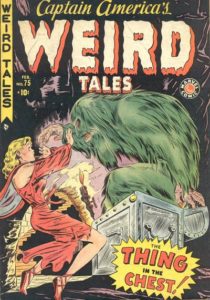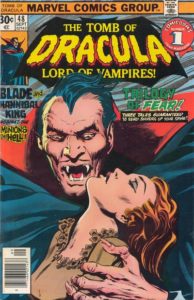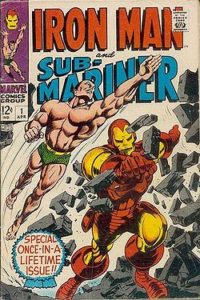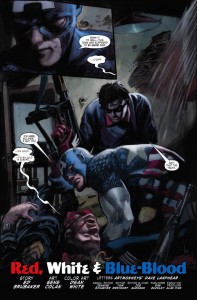Welcome, ComicAttack readers, to our look at the 2010 Eisner nominated titles. Between April and July, when the winners are announced at Comic-Con International, we’ll be highlighting some of the titles so that you can get to know them, and know why they were nominated for one of the top awards in the comic book industry. Today we’ll be looking at Captain America #601: “Red, White, and Blue-Blood,” which was nominated for Best Single Issue (or One-Shot) and Best Writer (Ed Brubaker).
 Much in the way that Fantastic Four #51 Vol 1 was a come from behind win after the historic Coming of Galactus story back in the 60s (or closer to the modern age, with Days of Future Past after the Dark Phoenix Saga), Captain America #601 is actually a stronger, and much more important entry to the Brubaker legacy, which culminated one month earlier in the 600th anniversary issue. The writing is spot on as usual, but the real heroics go to Gene Colan, whose history is as pronounced, and more lasting perhaps than Captain America himself.
Much in the way that Fantastic Four #51 Vol 1 was a come from behind win after the historic Coming of Galactus story back in the 60s (or closer to the modern age, with Days of Future Past after the Dark Phoenix Saga), Captain America #601 is actually a stronger, and much more important entry to the Brubaker legacy, which culminated one month earlier in the 600th anniversary issue. The writing is spot on as usual, but the real heroics go to Gene Colan, whose history is as pronounced, and more lasting perhaps than Captain America himself.
Gene Colan has been drawing professionally for almost seventy (70) years. No other artist comes close to this career span. Often called an illustrator more than an artist, Colan’s work is unmistakable and brilliant.

He has introduced to hundreds, if not thousands of comic book and pop artists, new and inventive ways to capture an image using a pencil as something more than a line tool. His most renowned work, Marvel’s sensational 70s romp Tomb of Dracula, is considered by many to be the best horror book in comic book history, capturing all the gothic undertones of the classic villain, yet still managing to be relevant upon release (the Comics Code softened up a bit by introducing horror into mainstream comics, after their persecution of the medium during the 50s; Marvel and DC wasted no time in getting their horror books on the shelves with Man-Thing, Swamp Thing, House of Mystery/Secrets, Werewolf by Night, and Tomb of Dracula).
Part of the success of Tomb of Dracula was the scribing had by Marv Wolfman, whose writing elegance was matched only by Roy Thomas at the time. But again, what removed all the camp from this title was the genuine artwork done by Colan and Palmer, particularly with their portrayal of eeriness and macabre, without ever resorting to shading. Interestingly, for reasons not fully understood, Colan was not permitted to do any covers for the title until much later.

Gene Colan is also remarkable when it comes to illustrating Daredevil, Sub Mariner, and Iron Man, three titles he can claim with almost complete ownership, but for Frank Miller and Bob Layton. Note the facial expressions of Iron Man, which Colan admits were a challenge, conveying emotion onto an iron mask. He also did convincing work for Batman and Wonder Woman. His brilliant satirical work for Howard the Duck has also earned himself, and the late Steve Gerber, cult-hit status.
But as far as superheroes go, his association with Captain America is surely the most recognizable. He drew the last issue of the Golden Age Captain America (Captain America’s Weird Tales #75 – 1954), and helped bring the hero into the silver age as a national icon along with Stan Lee.

In another 40 or 50 years, Ed Brubaker will garner as many accolades as Gene Colan has attracted in this article. Brubaker’s praises have been sung here and elsewhere as the best superhero writer today. Almost single-handedly rescuing Captain America from obscurity, and responsible for the most interesting Steve Rogers storyline in his prolific career, Brubaker is no stranger to salvaging greatness from superhero titles that have habitually waned over the years (both Uncanny X-Men: Rise & Fall of the Shi’ar Empire and Messiah Complex serve as striking examples). To be sure, CA #601 would not have been as effective without the steady plot devices had by the expert scripting of Brubaker, who admits that he wrote this story with Colan in mind, playing to his strengths as an artist of the supernatural.
On to the story, then! We are treated to a “lost tale” of Captain America and Bucky during the aftermath of WWII, presumably around the time of Baron Blood’s final encounter with the Sentinel of Liberty, and just before Bucky’s demise at the hands of Baron Zemo. Bucky and Nick Fury are in present day, reminiscing about the time when the Invaders were just forming. This provides a segue to a “worst of times” recall for Bucky and Rogers, all the way back to Bastogne, Belgium circa 1945. We get to hear Cap console a wounded soldier, reminding him of his call to duty, which establishes a kinship between the two, in that Rogers is “less a hero,” saying, “you and I aren’t so different… I’m just a soldier, too. And there was a time not too long ago when I wasn’t even that.” It is a poignant moment that serves as a reminder for wartime veterans, their call to duty and honor in the most horrific of times. In quick fashion, the dead soldier is transformed into a vampire and attacks. Cap deduces that his soldiers are being turned into the walking undead by Baron Blood, and the search begins, but not before the reader is blessed with a two-panel snapshot of Rogers’ Super-Soldier origin.

The scripting by Brubaker is first rate. For instance, in his investigation, Captain America happens upon the door of a townswoman whom Bucky questions whether or not can speak English. Her reply is curt, in that she speaks many languages, but retorts, “it is only you Americans who expect the entire world to speak your way.” Captain America expertly replies, “you’re talking to the wrong Americans then, madame… because the only thing I hope to hear from you is the truth… and I’ll take it in whatever language you like.” In one sentence, Captain America’s essence is revealed for new readers and old alike: a portrayal that satisfies the uninitiated without resorting to sanctimony.
This issue is actually one of the darker superhero stories in print, and not simply because of the subject matter; the undead have a way of creeping under the reader’s skin after all, but there are decisions made between Captain America and Bucky that resonate throughout the story, shaping it into a bit of a mystery. The medium, i.e. pencils saturated with sullen colors, and encapsulated by multi-angled paneling, does everything in its power to provide the perfect mood. Lastly, it is a violent tale, even by modern standards, and the climax is most apropos up to the chilling end.
The story is simply one of Brubaker’s best, and again in the hands of Gene Colan, has an unmatched ethereal and artistic quality that, like a fine wine, showcases a technique that has improved with age and experience. Lesser artists who pull off comic book art using today’s computer generated coloring compounds might make the effort in matching the robustness of Colan’s pencils, but I would like to meet the fellow who believes he could improve this book with pen and ink. Again, the tag team had between Colan and Brubaker is amazingly effective; a bit surprising that there is so much chemistry at work, seeing as how they were so quickly brought together, for such a short period, and only once.
This is a splendid one-shot, and ranks as one of the Captain’s all time greatest issues. Most deserving of an Eisner Award.
Dementia 5
dementia5@comicattack.net


Great stuff D5. I loved this issue for it’s horror angle and also for Colan’s work. Brubaker deserves his praise for sure as well. Oh, and Tomb of Dracula IS the best horror comic ever.
Always nice to pick a winner, ennit?
Seriously, this may be the best comic I’ve read all year. Glad it reached you the way it reached me. And yes, I agree that every other horror mag out there (and that includes the EC titles from the 50s) falls behind Tomb of Dracula in most every way.
I have Essential: The Tomb of Dracula Vol. 1…it’s freakin’ awesome. Even in black and white, it’s awesome. Yep.
IMO it’s even better in black and white. Really showcases the inking that went into the book, and nothing says “gothic” and “mysterious” like black and white (and red).
@Aron & D5- ToD is really cool in B & W. I have the Essentials vol. 1-4 and have read 1-3, 3 or 4 times. lol
Well, check it out! This one won the Eisner. I’m thinking that name recognition had a lot to do with it, though. Who wouldn’t vote for the great Gene Colan?
This was one of the titles that I was pretty sure was going to win an award.
Pingback: 2010 Eisner Award Winners